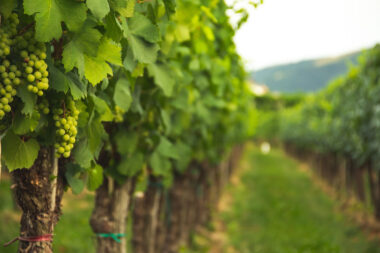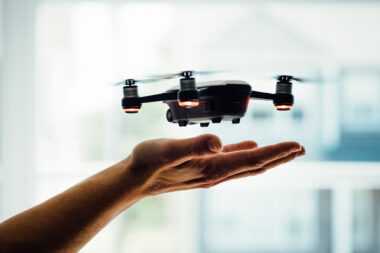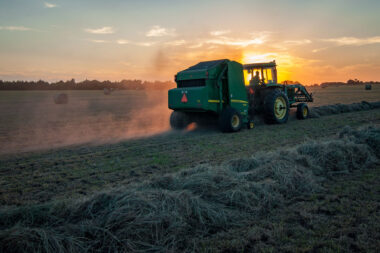Introduction
The integration of wind turbines into agricultural lands marks a significant stride in sustainable land use and energy production. This approach allows farmers to harness the natural power of the wind, providing a renewable energy source while maintaining agricultural productivity. It represents a harmonious blend of traditional farming with modern, green technology, offering a dual benefit of energy generation and agricultural output. As concerns over energy sustainability and environmental impact grow, wind turbines on farms emerge as a promising solution, balancing the needs of energy production with the preservation of agricultural land.
Information Architecture of a Wind Turbine
- Sensors and Monitoring Systems: Advanced wind turbines are equipped with various sensors that collect data on wind speed (anemometers), wind direction (wind vanes), blade position (pitch sensors), vibration, temperature, and pressure. This information is crucial for optimizing performance and predicting maintenance needs.
- Control Systems: Turbines have sophisticated control systems that process sensor data to adjust the turbine’s operation. This includes changing the blade pitch and orientation (yaw) to maximize efficiency and protect the turbine in high winds.
- Communication Systems: Modern turbines are often part of a wind farm network, communicating with a central control system. This system uses data from each turbine to optimize the overall performance of the farm and integrate the power into the electrical grid.
- Data Analysis and Storage: The collected data is transmitted to off site facilities for analysis. Advanced algorithms and machine learning models are used to predict maintenance needs, analyze performance trends, and optimize energy production.
- SCADA Systems (Supervisory Control and Data Acquisition): These systems are used for remote monitoring and control of the turbine. SCADA systems enable operators to manage multiple turbines simultaneously, providing real-time data visualization and control capabilities.
Design Structure of a Wind Turbine
- Rotor Blades: These are aerodynamically designed to capture wind energy. The blades are usually made of composite materials like fiberglass or carbon fiber for strength and flexibility.
- Hub: The hub connects the rotor blades to the nacelle. In some designs, the hub may include mechanisms to adjust the pitch of the blades.
- Nacelle: Situated atop the tower, the nacelle houses the generator, gearbox (in geared turbines), drive train, and other mechanical components. It’s designed to protect these components from environmental elements.
- Generator: This converts the mechanical energy from the rotor into electrical energy. There are various types of generators used, such as asynchronous (induction) generators and synchronous generators.
- Gearbox (Optional): In turbines where a gearbox is used, it increases the rotational speed from the rotor to the speed required by the generator. Direct-drive turbines, however, do not use a gearbox.
- Tower: Supporting the nacelle and rotor, the tower is a critical component of the turbine’s structure. It’s typically made of steel or concrete and is designed to withstand environmental loads.
- Foundation: The foundation anchors the turbine to the ground. Its design depends on the location and soil conditions and can vary from a simple concrete base to more complex designs for offshore turbines.
- Yaw System: This system allows the turbine to rotate around a vertical axis so that it can be oriented into the wind.
- Electrical Systems: These include the internal power supply, transformers (for stepping up the voltage for transmission), and connection to the power grid.
- Cooling and Heating Systems: To maintain operational temperatures, turbines may have cooling systems for the generator and other components and heating systems for cold climates.
Manufacturing of wind turbines
The manufacturing of a wind turbine involves several intricate processes and the assembly of various components. These components are often manufactured separately and then assembled either on site or in a manufacturing facility.
- Rotor Blade Manufacturing:
- Material Preparation: Blades are typically made of composite materials like fiberglass or carbon fiber for strength and lightness. These materials are prepared and cut to size.
- Molding: The materials are placed in large molds to form the shape of the blades. The process involves layering the composite materials and using resins to bond them together.
- Curing: The blades are then heated in the mold to cure the resin, solidifying the composite material into a rigid structure.
- Finishing: After curing, the blades undergo finishing processes like sanding, coating, and painting for protection against environmental factors.
- Nacelle Assembly:
- The nacelle houses the generator, gearbox (if used), and other mechanical and electrical components.
- Components like the gearbox and generator are typically manufactured in specialized facilities and then assembled together in the nacelle.
- The nacelle is also fitted with the control and electrical systems necessary for operation.
- Tower Manufacturing:
- Wind turbine towers are usually made of steel. The steel is cut, shaped, and welded into sections.
- These sections are then transported to the site, where they are assembled and bolted together.
- Other Components:
- Additional components, like the hub, bearings, and yaw mechanism, are also manufactured separately.
- Electronic components, including sensors and control systems, are integrated during the assembly process.
Working Principles and Operation
- Energy Capture:
- Wind turbines convert the kinetic energy of the wind into mechanical energy. When the wind blows, it exerts force on the rotor blades.
- The shape of the blades (airfoil design) causes them to lift and rotate, turning the rotor.
- Mechanical to Electrical Energy Conversion:
- The rotor is connected to a low speed shaft, which turns at the same speed as the rotor.
- In most turbines, a gearbox is connected to this shaft, which increases the rotational speed for the generator.
- The high speed shaft from the gearbox drives the generator, which converts the mechanical energy into electrical energy.
- Control Systems:
- Modern wind turbines are equipped with sophisticated control systems that adjust the blade pitch and the yaw of the turbine to optimize efficiency.
- The pitch control adjusts the angle of the blades to control the rotor’s speed, especially during high winds.
- The yaw control system orients the turbine into the wind to maximize energy capture.
- Electrical Systems:
- The electricity generated is typically alternating current (AC) and may need to be converted and stepped up in voltage through a transformer.
- This electricity is then fed into the electrical grid or used locally.
- Monitoring and Maintenance:
- Wind turbines are monitored remotely to ensure optimal performance and to detect any issues.
- Regular maintenance is performed to keep the turbine in good working condition, extending its operational lifespan.
Benefits of Wind Turbines on Agricultural Lands
- Dual Land Use: Farmers can continue agricultural activities while also hosting wind turbines, effectively utilizing the same land for multiple purposes. Crops can still be grown, and livestock can graze around the turbines.
- Additional Income Source: Leasing land for wind turbine installation provides farmers with a steady income stream, which can be particularly beneficial in times of fluctuating agricultural market prices.
- Sustainable Energy Production: Wind turbines contribute to renewable energy generation, reducing dependence on fossil fuels and lowering greenhouse gas emissions.
- Minimal Land Footprint: Wind turbines occupy a relatively small land area, leaving most of the land available for farming. The actual footprint is limited to the turbine base and the access roads.
Technical aspects
1. Turbine Types
- Horizontal Axis Wind Turbines (HAWTs): The most common type, characterized by their horizontal rotor shaft and propeller like blades. They are typically more efficient and have higher capacities.
- Vertical Axis Wind Turbines (VAWTs): These have a vertical rotor shaft and are omnidirectional (they don’t need to be oriented towards the wind). They are less common but can be beneficial in environments where wind directions change frequently.
2. Blade Design
- Materials: Modern turbine blades are made of composite materials such as fiberglass or carbon fiber, chosen for their strength-to-weight ratio.
- Aerodynamics: Blades are designed using principles of aerodynamics to maximize lift and minimize drag. The shape and pitch of the blades can be adjusted to control the rotor speed and optimize efficiency.
3. Rotor and Nacelle
- Rotor: Consists of blades and a hub. The rotor converts the kinetic energy of the wind into rotational mechanical energy.
- Nacelle: Houses the gearbox (if present), generator, controller, and other mechanical components. It’s positioned on top of the tower and can yaw to align with the wind direction.
4. Power generation
- Generator Types: Commonly used generators are induction (asynchronous) generators and synchronous generators. Some of the newer designs use direct-drive generators, eliminating the need for a gearbox.
- The generator transforms the mechanical energy from the rotor into electrical energy. The output is typically three-phase alternating current (AC).
5. Control Systems
- Pitch Control: Adjusts the angle of the blades to control the rotational speed and prevent damage in high winds.
- Yaw Control: Keeps the rotor facing into the wind to maximize energy capture.
6. Tower and Foundation
- Height: Towers can be over 100 meters tall to capture faster and less turbulent wind. Taller towers allow for larger rotors, which can capture more energy.
- Construction: Made primarily of steel or concrete. The design must support the weight of the nacelle and rotor and withstand environmental loads.
- Foundation: The foundation must be strong enough to support the turbine and resist overturning forces. The design depends on soil conditions and turbine size.
7. Electrical and Grid Connection
- Grid Integration: Wind turbines are connected to the power grid through substations that step up the voltage for long-distance transmission.
- Power Conditioning: Systems are used to match the frequency and phase of the turbine’s output to the grid.
8. Safety and Monitoring Systems
- Braking Systems: Mechanical and aerodynamic brakes are used to stop the rotor in emergencies or for maintenance.
- Remote Monitoring: Wind turbines are equipped with sensors and communication systems for performance monitoring, predictive maintenance, and troubleshooting.
9. Environmental Considerations
- Noise: Modern turbines are designed to minimize noise, which can be a concern for nearby residential areas.
- Wildlife Impact: Careful site selection and design aim to mitigate impacts on birds and bats.
Considerations and Challenges
- Site Selection: Wind turbines require locations with consistent and strong wind speeds. Site selection involves assessing wind resources, which might include installing anemometers to measure wind speeds over a period of time.
- Infrastructure and Access: Building wind turbines requires access roads and infrastructure that can handle heavy machinery. This construction phase can temporarily disrupt farming activities.
- Environmental Impact: There needs to be an assessment of the potential impact on local wildlife and ecosystems. In some cases, wind turbines can affect bird and bat populations.
- Community Response: The introduction of wind turbines can change the landscape’s visual aspect, which might meet with resistance from local communities. Farmers need to consider their neighbors’ views and the broader community.
Operational Aspects
- Maintenance Access: Regular maintenance is required for wind turbines, so access roads must be maintained. This factor needs to be balanced with farming activities.
- Integration with Farming Operations: Careful planning ensures that the placement of turbines and associated infrastructure minimizes disruption to farming operations.
- Government Policies and Incentives: In many regions, there are government incentives for renewable energy, including tax benefits, grants, or subsidies, which can make wind turbines on agricultural lands more financially viable.
Future Prospects
The need for sustainable farming methods and the rising demand for renewable energy are driving the integration of wind turbines into agricultural areas. Innovations in turbine technology, such as quieter and more efficient models, might further enhance their suitability for agricultural settings.
Conclusion
Wind turbines on agricultural lands offer a promising path for sustainable energy and agriculture. By harnessing wind power, farmers can diversify their income, contribute to renewable energy goals, and ensure the continued productivity and sustainability of their land. This synergy between agriculture and renewable energy is a key component of a more sustainable future.



